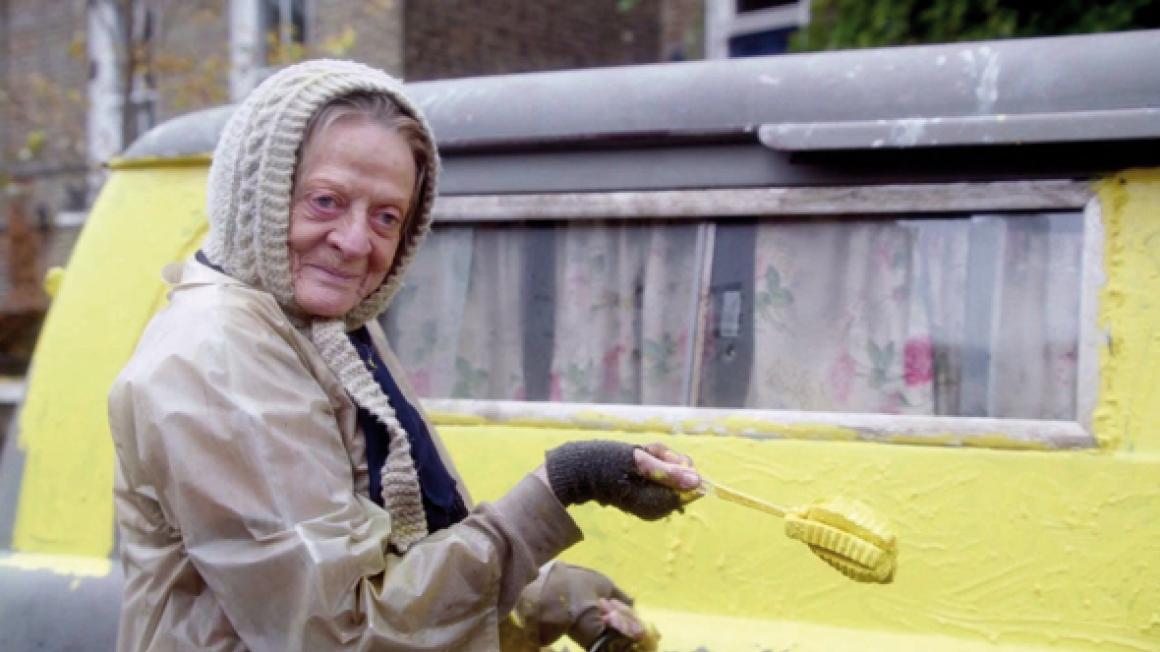The Lady in the Van
 National treasures abound in The Lady In The Van, in which Maggie Smith delivers an outstanding performance as the eponymous vagrant who parks her van in writer Alan Bennett’s Camden driveway and doesn’t leave for 15 years.
National treasures abound in The Lady In The Van, in which Maggie Smith delivers an outstanding performance as the eponymous vagrant who parks her van in writer Alan Bennett’s Camden driveway and doesn’t leave for 15 years.Not only is Smith at the top of her imperious game, but Bennett’s writing, adapting his own novel and stage play for this screen version, is as elegant, piercing and bluntly funny as ever. In a way, we get two feuding Bennetts (played by Alex Jennings) for the price: the one who sits at his window wondering what to write; and the other who goes out and about and lives life.
In the stage play, which ran at the National Theatre in 1999, the two Alans were played by separate actors, but with this film’s only bit of modern trickery, Jennings can play them both and their bickering lends the film a smart level of creative tension.
Jennings’s performance is all the more laudable for not being utterly blown away by Smith’s customary excellence. She plays Miss Shepherd with a remarkable amount of energy and, while of course finding in her character that spark of humanity that brings the work alive, she never goes for an easy vein of sentimentality. This woman is eccentric to the point of obduracy and quite unlovable – ‘bigoted, rank and rude’, as the Bennett voice-over would have it.
Indeed, the first thing Bennett writes about is Miss Shepherd's smell, and it’s no exaggeration to state that via Smith’s performance, the ‘odoriferous concerto’ emanating from her and her four-wheeled abode reaches the audience’s noses just as boldly as it once offended the local residents. Smith’s own magnificent nostrils nevertheless twitch and flare, oblivious.
In his third screen adaptation of one of his and Bennett’s stage collaborations, director Nicholas Hytner (The Madness Of King George, The History Boys) wisely lets the writing and the performances speak for themselves, yet there’s a subversiveness at play, too. Smith’s Miss Shepherd (and her smell) seep into the cracks of this Camden street, revealing the character of a London community.
The film is actually shot in Camden’s Gloucester Crescent and in Bennett’s old house where this true-life oddity occurred, so it is a crucial character in the picture. We get the neighbours (Frances de la Tour, Roger Allam) and the social workers, the visitors, the local traders and the children. It’s its own little England and Bennett skewers it with his usual poignant accuracy.
I delighted in The Lady In The Van. Smith, Jennings and Jennings make a wonderful trio of outsiders, although of course the point is that Camden – and England – is full of such people and margins.
Although one wishes British cinema had come up with something a little edgier, experimental or cooler, it can hardly do things better than this sort of thing, one of the finest British films of the year. If she is nominated, I hope Smith can be bothered to go for an Oscar, even though you know she really doesn’t give a stuff about such things (she’s already got two anyway).
One parlour game the eagle-eyed among you might like to play while watching is trying to spot every cast member of The History Boys – apart from the late Richard Griffiths, of course – who makes a cameo in the film as acknowledgement to both Hytner and Bennett. Although I reckon you’ll be revelling in this mordantly funny, deceptively rich film far too much to notice.


